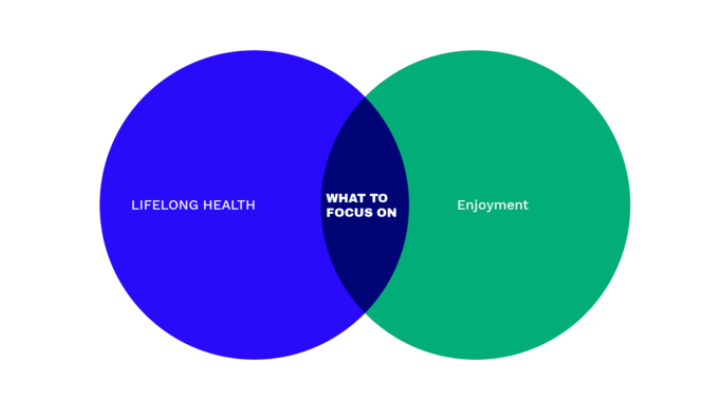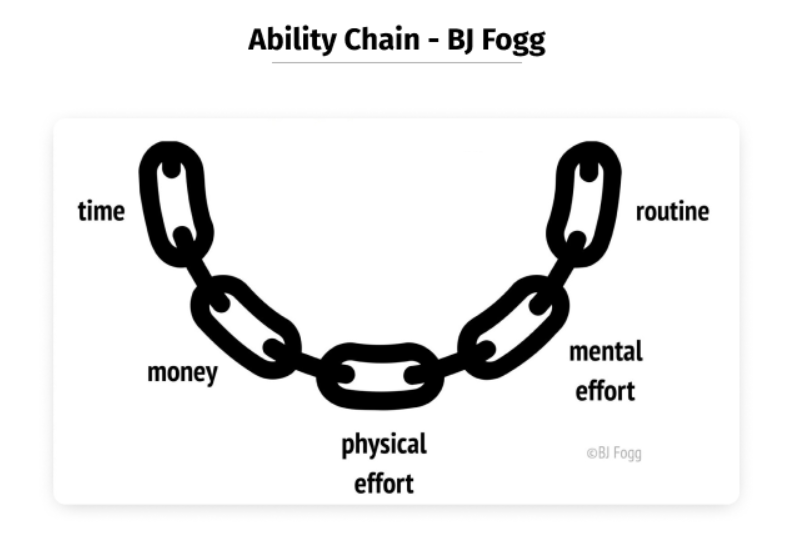There is a universe of advice out there. Too much to process. So, I use one powerful question to concentrate on what really matters: Is this providing me with the tools I need to take action?
If the answer is no, I skip it. It saves me an awful lot of time.
So, when I say that you need to take care of yourself, I realize that I’m not telling you anything new. What I want to do differently is to make it more actionable.
Fundamental mechanics: a very quick review
Just so we’re all on the same page, the fundamentals don’t vary. Do no harm. Jettison the stuff that does. Sleep well—and sufficiently. Eat nutrient-dense foods that make you feel good and function well. Stack up daily movement that does the same. Challenge strength, aerobic capacity and cognition. Be kind to yourself (dammit). Have a social circle that takes good care of you. Ask for support, help, and therapy where and when you need it.
When do we struggle with the fundamentals? It likely comes down to one of a few things:
- We are overwhelmed
- Our vices are taking us in the opposite direction
- We need to develop the skills of quick action
Overwhelm
Fitness professionals often try to stand out by being different. This creates a reverse network effect where the more information there is, the less we benefit.
There’s an MD that I was recently told to follow because of his expertise. The very first post I landed on was pure chicanery. Misinterpreted evidence and a nonsense conclusion. This guy has an MD and 1.5 million followers. And he’s talking nonsense. Now amplify this type of confusion by tens of thousands of other voices. Hundreds of thousands. No wonder people hesitate before taking action.
How do we deal with this? Keep things simple and stick to the fundamentals above—with great consistency. Walk the Middle Path. You can achieve superb results by following all of the above with patience, curiosity, and a bit of personalization. Anything that pulls us away from the fundamentals is a distraction—at best.
Finding the nice in vice
You most likely already know all of the big picture stuff you need to do but are pulled in the opposite direction by vices. We’ve all got them. So, before you beat yourself up about whatever your vice is, it will be useful to ask what purpose it serves.
If you eat too much tasty stuff, for example, is it for pure enjoyment? Is it to take a break from negative feelings? To feel a sense of control? These are all important and powerful things. I hope that you would never feel bad about them. And unless you have an acute health crisis, I don’t know if I would even recommend jettisoning them until you find something else that can serve that purpose AND your health goals at the same time.
Being able to identify the kernel of good stuff inside the bad stuff is an incredible skill. You can develop it by thinking through the following questions as you read:
- What positive things do I gain from these experiences?
- What are my feeling about these experiences in the moment? After one hour? After 48 hours?
- What would deliver even greater enjoyment (even if it’s just better-quality chocolate)?
- what would better serve my health aspirations?
- What options could serve my health aspirations AND bring me enjoyment?

If you look at anyone who is successful AND happy, you’re probably going to find a person whose enjoyment is deeply aligned with their goals. And so, we have three fundamental options:
- We can win the neurochemical lottery and be born loving hill sprints, broccoli, and cold plunges
- We can have an epiphany and become that person instantaneously
- We can develop the skills behind syncing our highest aspirations with positive emotional experiences
Category 3 is the one most under our control. Especially since many cultural and commercial influences are trying to push us in the opposite direction.
Quick action
The greatest thing I’ve gained over the past year is the ability to turn my anxieties into my allies. You know these guys. They’re the tiny little assholes that live inside of our brains. They include doubt, self-criticism, and insufficiency. And they pipe up any old time. I now welcome them because I know how to harness their energy.
Think of these signals as requests for action—complete with a small surge of energy to get the job done. The trick is to focus on what type of action they’re asking for. That’s because the messages themselves tend to be ham-fisted and negative. Like the voices of well-intentioned but unskilled parents. So, when a negative message comes in, I don’t listen to what’s being said but instead ask what the aspiration is.
Since this is Pride Month, I want to tell you a little story that feels relevant. Many years ago, I helped a friend put together a pilot for his TV show. He was vexed by the lack of Asian faces and perspectives in media. So, one sunny day in June, we took to a pre-parade Church Street to shoot some interviews. We asked gay, second-generation Canadians about coming out to their Asian parents.
Their stories often shared a similar theme. Many of the parents initially pushed back hard. These were not all happy tales. But many were. Truly. It turned out that the fear behind the initial reactions was not often rooted in homophobia—at least as I understood it as a young man. It was often a different type of fear: that their kids would have greater barriers to success. That they would struggle for acceptance and happiness.
Those who were able to peel back the layers discovered that their parents only ever wanted them to be successful and happy. That was the kernel. It had nothing to do with who/how their kids loved. Those who focused on the kernel were often able to find resolution and support.
So, don’t worry about the ham-fisted or potentially ugly wording you might hear; ask instead what the aspiration is. The beautiful kernel. Is it to take better care of your physical or mental health? To meet a life partner? To do more work of impact? Focus on the aspiration.
Next, create a 30-second action
Once you know what the kernel is, the real work begins. Instead of just knowing the big version of an aspiration, the challenge is to design an action that takes roughly 30 seconds to complete. This is our Tiny Habit.

So, if a puzzle is the big aspiration, the 30-second action is a single piece. The trick is developing actions that you can respond to in the moment. They can be literal actions like bumping out a couple of push-ups after you notice yourself doom-scrolling. They can be mindful actions like gratitude or presence. They can also be strategic actions like putting a regenerative activity in your calendar. There is no waiting involved. No better time. No better you. This is something that you can act on right now.
I generally advocate planning for low motivation. Just because your motivation is trending high in the moment, it doesn’t mean that you’ll feel that way when your calendar notification goes off. So bias toward consistency, not scale. You want a prompt that you will respond to at least nine times out of 10.
However, let’s say that you are feeling extra motivated. Juiced! Jazzed! In those moments, you can still take a quick action. But you harnesses that extra energy to level-up your abilities. Here, I refer to anything that overcomes the limiting factors in BJ Fogg’s Ability Chain.

You might do this by signing up for a service or course. By purchasing tools or software. Cancelling a low ROI commitment (highly satisfying). Or by hiring a coach.

